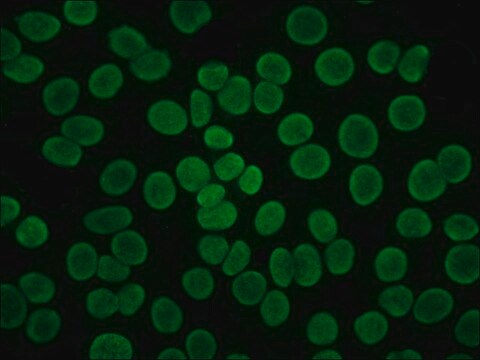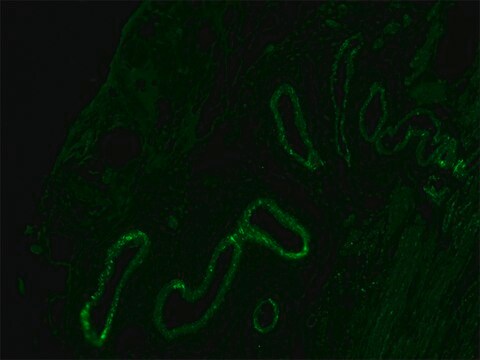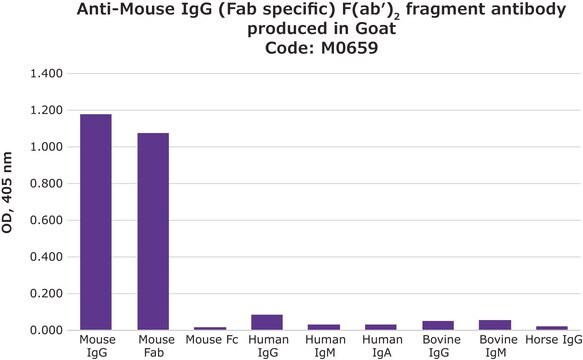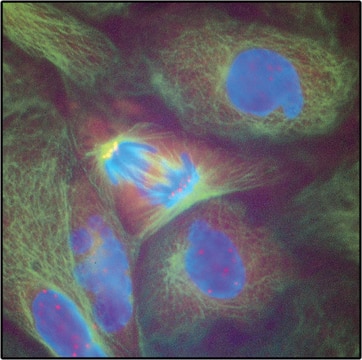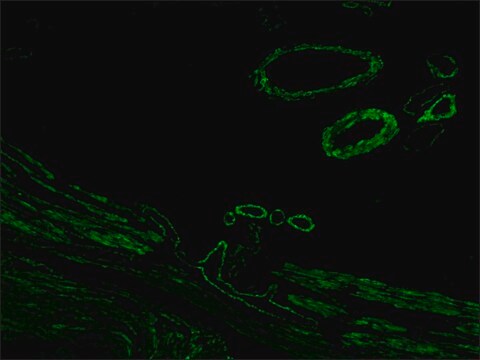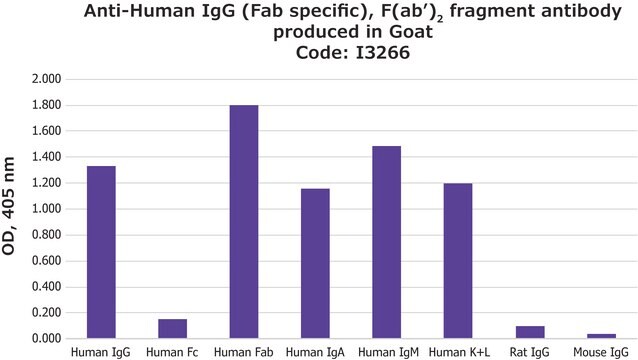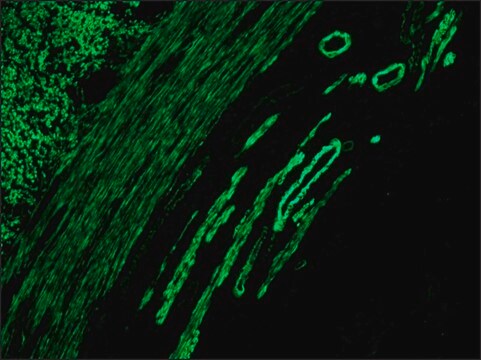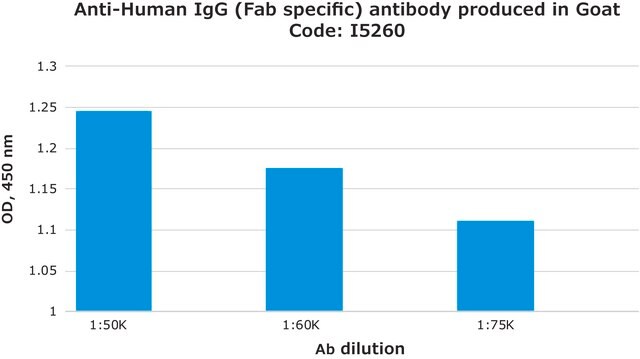F2653
Anti-Mouse IgG (Fab specific) F(ab′)2 fragment–FITC antibody produced in goat
flow cytometry grade, affinity isolated antibody, buffered aqueous solution
About This Item
Prodotti consigliati
Origine biologica
goat
Livello qualitativo
Coniugato
FITC conjugate
Forma dell’anticorpo
affinity isolated antibody
Tipo di anticorpo
secondary antibodies
Grado
flow cytometry grade
Clone
polyclonal
Stato
buffered aqueous solution
tecniche
flow cytometry: 1:100
immunohistochemistry (formalin-fixed, paraffin-embedded sections): 1:160
Temperatura di conservazione
−20°C
modifica post-traduzionali bersaglio
unmodified
Cerchi prodotti simili? Visita Guida al confronto tra prodotti
Descrizione generale
Specificità
Useful when trying to avoid background staining due to the presence of Fc receptors.
Immunogeno
Applicazioni
- indirect immunofluorescence staining
- immunofluorescence staining
- flow cytometry
Flow cytometry/Cell sorting (1 paper)
Azioni biochim/fisiol
Altre note
Stato fisico
Nota sulla preparazione
Esclusione di responsabilità
Non trovi il prodotto giusto?
Prova il nostro Motore di ricerca dei prodotti.
Codice della classe di stoccaggio
10 - Combustible liquids
Classe di pericolosità dell'acqua (WGK)
nwg
Punto d’infiammabilità (°F)
Not applicable
Punto d’infiammabilità (°C)
Not applicable
Dispositivi di protezione individuale
Eyeshields, Gloves, multi-purpose combination respirator cartridge (US)
Scegli una delle versioni più recenti:
Possiedi già questo prodotto?
I documenti relativi ai prodotti acquistati recentemente sono disponibili nell’Archivio dei documenti.
I clienti hanno visto anche
Il team dei nostri ricercatori vanta grande esperienza in tutte le aree della ricerca quali Life Science, scienza dei materiali, sintesi chimica, cromatografia, discipline analitiche, ecc..
Contatta l'Assistenza Tecnica.
